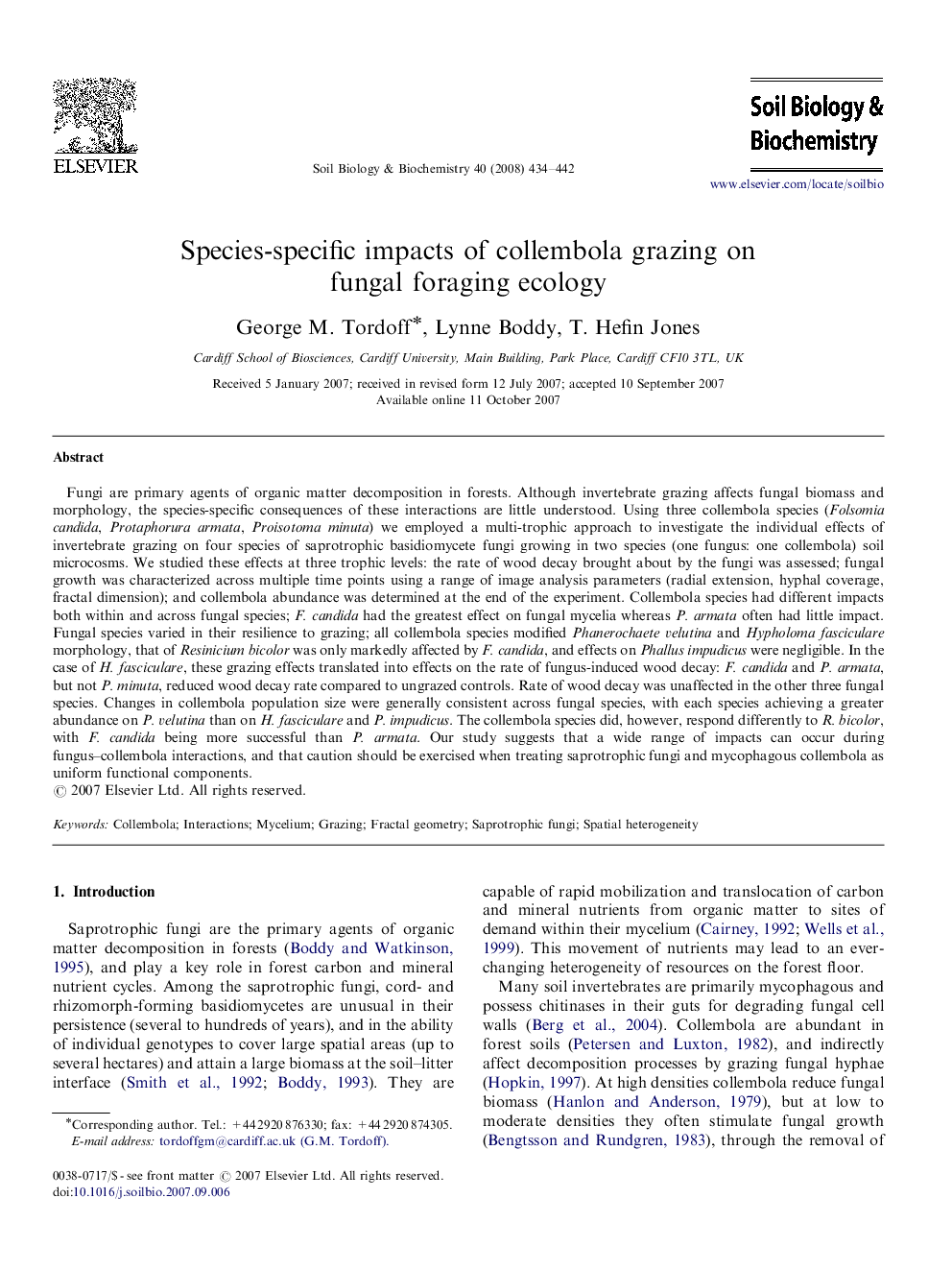| کد مقاله | کد نشریه | سال انتشار | مقاله انگلیسی | نسخه تمام متن |
|---|---|---|---|---|
| 2025337 | 1069992 | 2008 | 9 صفحه PDF | دانلود رایگان |

Fungi are primary agents of organic matter decomposition in forests. Although invertebrate grazing affects fungal biomass and morphology, the species-specific consequences of these interactions are little understood. Using three collembola species (Folsomia candida, Protaphorura armata, Proisotoma minuta) we employed a multi-trophic approach to investigate the individual effects of invertebrate grazing on four species of saprotrophic basidiomycete fungi growing in two species (one fungus: one collembola) soil microcosms. We studied these effects at three trophic levels: the rate of wood decay brought about by the fungi was assessed; fungal growth was characterized across multiple time points using a range of image analysis parameters (radial extension, hyphal coverage, fractal dimension); and collembola abundance was determined at the end of the experiment. Collembola species had different impacts both within and across fungal species; F. candida had the greatest effect on fungal mycelia whereas P. armata often had little impact. Fungal species varied in their resilience to grazing; all collembola species modified Phanerochaete velutina and Hypholoma fasciculare morphology, that of Resinicium bicolor was only markedly affected by F. candida, and effects on Phallus impudicus were negligible. In the case of H. fasciculare, these grazing effects translated into effects on the rate of fungus-induced wood decay: F. candida and P. armata, but not P. minuta, reduced wood decay rate compared to ungrazed controls. Rate of wood decay was unaffected in the other three fungal species. Changes in collembola population size were generally consistent across fungal species, with each species achieving a greater abundance on P. velutina than on H. fasciculare and P. impudicus. The collembola species did, however, respond differently to R. bicolor, with F. candida being more successful than P. armata. Our study suggests that a wide range of impacts can occur during fungus–collembola interactions, and that caution should be exercised when treating saprotrophic fungi and mycophagous collembola as uniform functional components.
Journal: Soil Biology and Biochemistry - Volume 40, Issue 2, February 2008, Pages 434–442